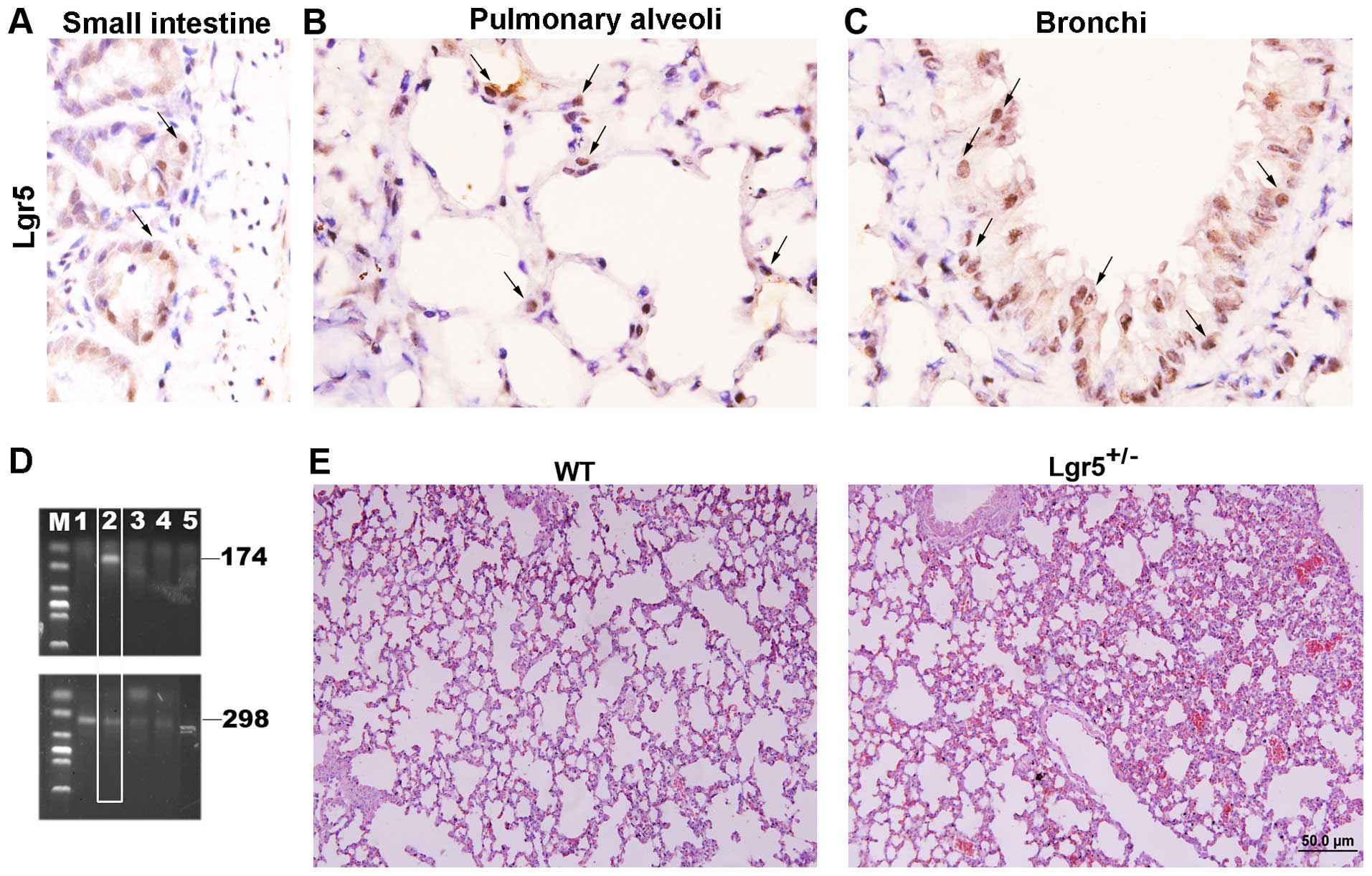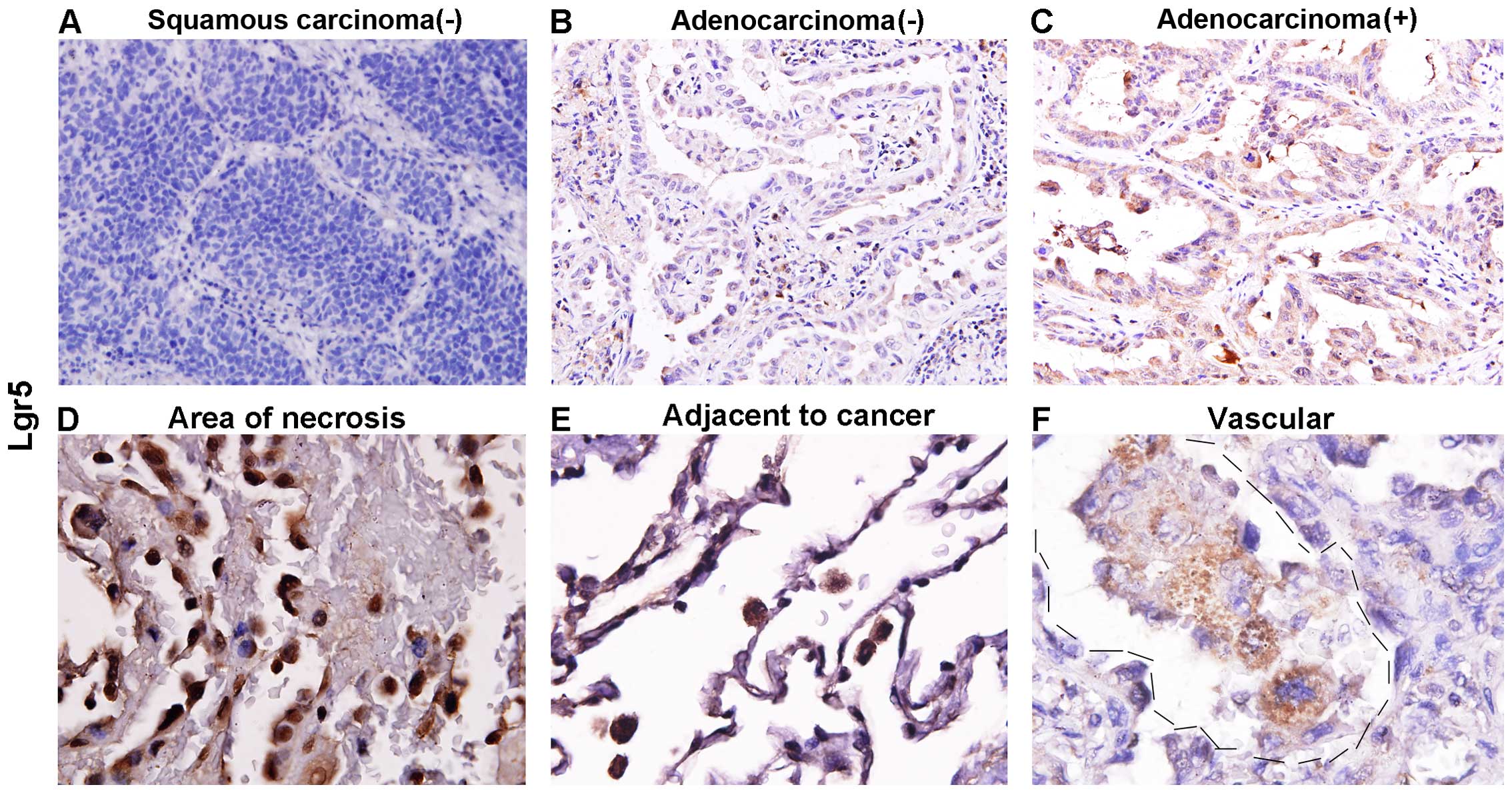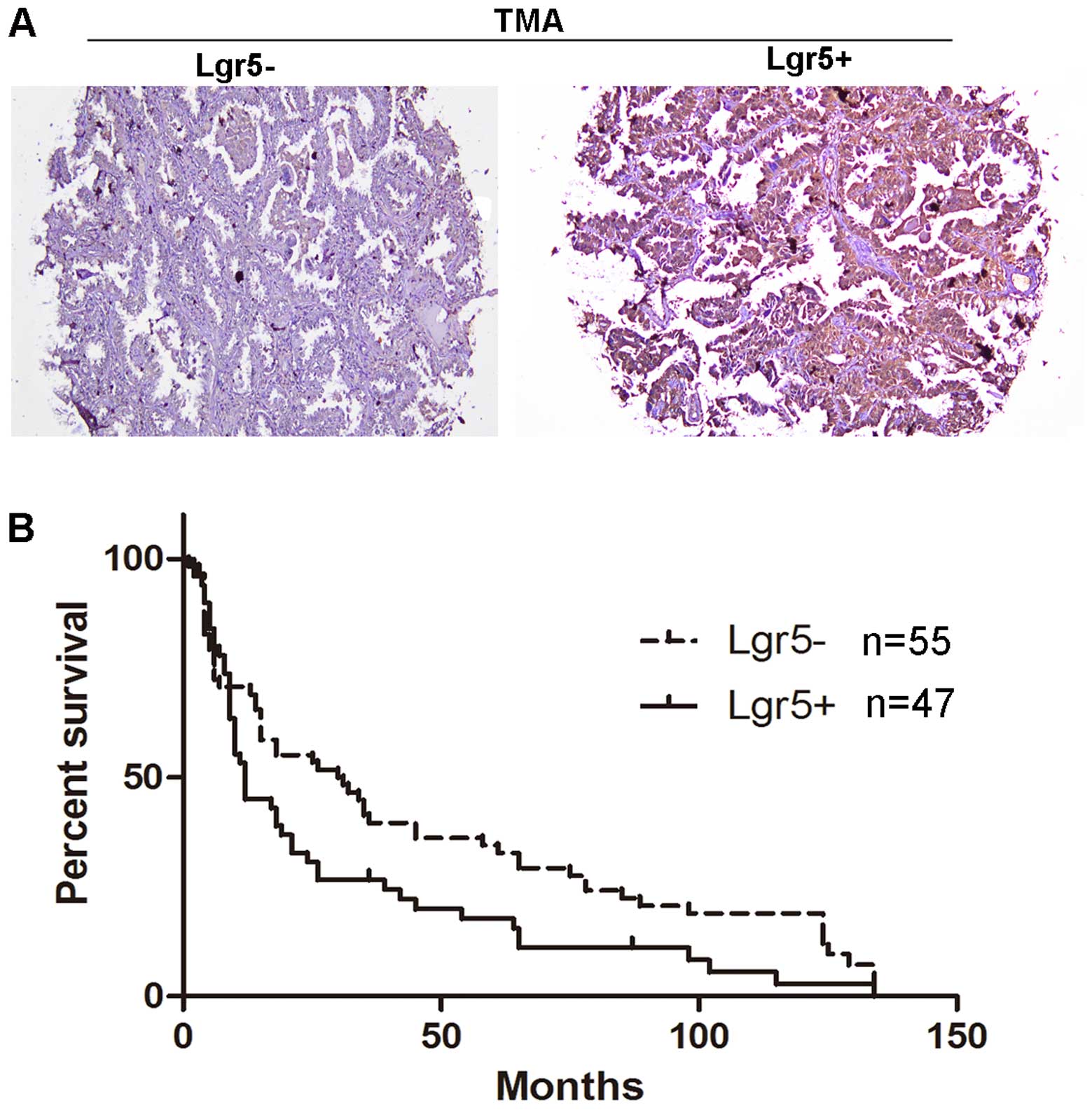|
1
|
Hsu SY, Liang SG and Hsueh AJ:
Characterization of two LGR genes homologous to gonadotropin and
thyrotropin receptors with extracellular leucine-rich repeats and a
G protein-coupled, seven-transmembrane region. Mol Endocrinol.
12:1830–1845. 1998. View Article : Google Scholar : PubMed/NCBI
|
|
2
|
Sukhdeo K, Koch CE, Miller TE, Zhou H,
Rivera M, Yan K, Cepko CL, Lathia JD and Rich JN: The Lgr5
transgene is expressed specifically in glycinergic amacrine cells
in the mouse retina. Exp Eye Res. 119:106–110. 2014. View Article : Google Scholar : PubMed/NCBI
|
|
3
|
Vroegindeweij E, van Mourik I, Cupedo T
and Cornelissen JJ: Characterization of Lgr5-positive epithelial
cells in the murine thymus. Eur J Immunol. 43:1243–1251. 2013.
View Article : Google Scholar : PubMed/NCBI
|
|
4
|
de Lau W, Barker N, Low TY, Koo BK, Li VS,
Teunissen H, Kujala P, Haegebarth A, Peters PJ, van de Wetering M,
et al: Lgr5 homologues associate with Wnt receptors and mediate
R-spondin signalling. Nature. 476:293–297. 2011. View Article : Google Scholar : PubMed/NCBI
|
|
5
|
Huch M, Dorrell C, Boj SF, van Es JH, Li
VS, van de Wetering M, Sato T, Hamer K, Sasaki N, Finegold MJ, et
al: In vitro expansion of single Lgr5+ liver stem cells induced by
Wnt-driven regeneration. Nature. 494:247–250. 2013. View Article : Google Scholar : PubMed/NCBI
|
|
6
|
Flanagan DJ, Phesse TJ, Barker N, Schwab
RH, Amin N, Malaterre J, Stange DE, Nowell CJ, Currie SA, Saw JT,
et al: Frizzled7 functions as a Wnt receptor in intestinal
epithelial Lgr5(+) stem cells. Stem Cell Reports. 4:759–767. 2015.
View Article : Google Scholar : PubMed/NCBI
|
|
7
|
Barker N, van Es JH, Kuipers J, Kujala P,
van den Born M, Cozijnsen M, Haegebarth A, Korving J, Begthel H,
Peters PJ, et al: Identification of stem cells in small intestine
and colon by marker gene Lgr5. Nature. 449:1003–1007. 2007.
View Article : Google Scholar : PubMed/NCBI
|
|
8
|
Snippert HJ, van der Flier LG, Sato T, van
Es JH, van den Born M, Kroon-Veenboer C, Barker N, Klein AM, van
Rheenen J, Simons BD and Clevers H: Intestinal crypt homeostasis
results from neutral competition between symmetrically dividing
Lgr5 stem cells. Cell. 143:134–144. 2010. View Article : Google Scholar : PubMed/NCBI
|
|
9
|
Torre LA, Bray F, Siegel RL, Ferlay J,
Lortet-Tieulent J and Jemal A: Global cancer statistics, 2012. CA
Cancer J Clin. 65:87–108. 2015. View Article : Google Scholar : PubMed/NCBI
|
|
10
|
Gao F, Zhou B, Xu JC, Gao X, Li SX, Zhu
GC, Zhang XG and Yang C: The role of LGR5 and ALDH1A1 in non-small
cell lung cancer: Cancer progression and prognosis. Biochem Biophys
Res Commun. 462:91–98. 2015. View Article : Google Scholar : PubMed/NCBI
|
|
11
|
Ryuge S, Sato Y, Jiang SX, Wang G,
Kobayashi M, Nagashio R, Katono K, Iyoda A, Satoh Y and Masuda N:
The clinicopathological significance of Lgr5 expression in lung
adenocarcinoma. Lung Cancer. 82:143–148. 2013. View Article : Google Scholar : PubMed/NCBI
|
|
12
|
Morita H, Mazerbourg S, Bouley DM, Luo CW,
Kawamura K, Kuwabara Y, Baribault H, Tian H and Hsueh AJ: Neonatal
lethality of LGR5 null mice is associated with ankyloglossia and
gastrointestinal distension. Mol Cell Biol. 24:9736–9743. 2004.
View Article : Google Scholar : PubMed/NCBI
|
|
13
|
Feldman AT and Wolfe D: Tissue processing
and hematoxylin and eosin staining. Methods Mol Biol. 1180:31–43.
2014. View Article : Google Scholar : PubMed/NCBI
|
|
14
|
Takeda K, Kinoshita I, Shimizu Y, Matsuno
Y, Shichinohe T and Dosaka-Akita H: Expression of LGR5, an
intestinal stem cell marker, during each stage of colorectal
tumorigenesis. Anticancer Res. 31:263–270. 2011.PubMed/NCBI
|
|
15
|
He S, Zhou H, Zhu X, Hu S, Fei M, Wan D,
Gu W, Yang X, Shi D, Zhou J, et al: Expression of Lgr5, a marker of
intestinal stem cells, in colorectal cancer and its
clinicopathological significance. Biomed Pharmacother. 68:507–513.
2014. View Article : Google Scholar : PubMed/NCBI
|
|
16
|
Metcalfe C, Kljavin NM, Ybarra R and de
Sauvage FJ: Lgr5+ stem cells are indispensable for
radiation-induced intestinal regeneration. Cell Stem Cell.
14:149–159. 2014. View Article : Google Scholar : PubMed/NCBI
|
|
17
|
Buczacki SJ, Zecchini HI, Nicholson AM,
Russell R, Vermeulen L, Kemp R and Winton DJ: Intestinal
label-retaining cells are secretory precursors expressing Lgr5.
Nature. 495:65–69. 2013. View Article : Google Scholar : PubMed/NCBI
|
|
18
|
Sato T, van Es JH, Snippert HJ, Stange DE,
Vries RG, van den Born M, Barker N, Shroyer NF, van de Wetering M
and Clevers H: Paneth cells constitute the niche for Lgr5 stem
cells in intestinal crypts. Nature. 469:415–418. 2011. View Article : Google Scholar : PubMed/NCBI
|
|
19
|
Becker L, Huang Q and Mashimo H:
Immunostaining of Lgr5, an intestinal stem cell marker, in normal
and premalignant human gastrointestinal tissue.
ScientificWorldJournal. 8:1168–1176. 2008. View Article : Google Scholar : PubMed/NCBI
|
|
20
|
Tsuji S, Kawasaki Y, Furukawa S, Taniue K,
Hayashi T, Okuno M, Hiyoshi M, Kitayama J and Akiyama T: The
miR-363-GATA6-Lgr5 pathway is critical for colorectal
tumourigenesis. Nat Commun. 5:31502014. View Article : Google Scholar : PubMed/NCBI
|
|
21
|
Kleist B, Xu L, Li G and Kersten C:
Expression of the adult intestinal stem cell marker Lgr5 in the
metastatic cascade of colorectal cancer. Int J Clin Exp Pathol.
4:327–335. 2011.PubMed/NCBI
|
|
22
|
Wang Y, Jiang CQ and Fan LF: Correlation
of Musashi-1, Lgr5, and pEGFR expressions in human small intestinal
adenocarcinomas. Tumour Biol. 36:6075–6082. 2015. View Article : Google Scholar : PubMed/NCBI
|












